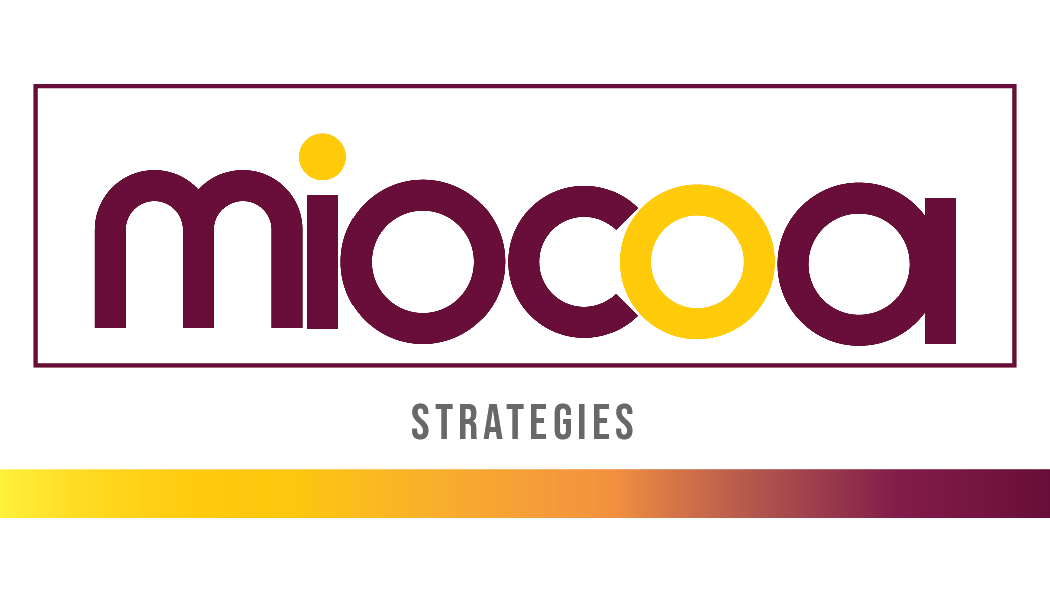How to Realistically Build A Brand (Step by Step)
I find many people who have amazing goals for their business but still lack the reallllll* foundational elements of creating a brand.
Somewhere we all learned building a brand means having a business idea, creating a logo, designing a website and then marketing the product or service. The problem is that this method skips over key elements of business development and is the easiest way to fail as a business owner.
Instead, I’ve created a step by step guide that I’ve used to help our clients here at Miocoa Strategies. I call it the ABCDM of brand building. These 5 steps will help you build your brand.
Step 1. Know who you’re brand is for (Target Audience)
"I know who my brand is for and all of that, I just need help with marketing," says the person who generally can't describe their ideal client.
This is the A: Audience. We stress this a lot here at Miocoa Strategies. Your ideal client is the bread and butter of your clientele. This person will help sustain your business. You should know every problem your ideal client is faced with in their personal and professional lives.
Other important information you should learn about your ideal client: their household income, age, technological fluency, gender, race and buying habits. You can use our guided Ideal Client Workbook to help learn more about your ideal client.
Step 2. Connect your brand to people (Personality, Story & Pillars)
This is when you should actually* begin creating your brand. Hence, the B of the ABCDM method.
Once you are clear about who you serve and identify their specific needs, it's easy to connect with your audience.
TRY: Identify 3-5 brand pillars that you believe help articulate your brand personality. Pillars are descriptive words that guide your brand direction.
Using the brand pillars, start listing phrases that connect with your audience. One of ours at Miocoa Strategies is “Collaboration over Competition.” This helps break the stigma that our target—black women—can’t work together. Everything we do centers around this (and other) short brand message.
Your brand messaging and brand story is an easy way to explain how important your problem-solving product or service is to your consumer. You can even leverage your brand story to set you apart from your competitors.
Step 3. Identify your unique selling point (Competitor Advantage)
Here’s where things get tricky. The C of the ABCDM method is arguably the least popular in brand-building yet it’s insanely important. will have some will jump over this step and go straight to Step 4, and that’s why they’ll fail.
You have to know everything about your audience and then, everything about your business. A to B. Audience to Business. Your business is unlikely to be the first of its kind so it’s your job to establish a uniqueness that will set you apart from other businesses just like you.
Take some time to decide what will be your unique selling point (USP).
Some popular USPs:
—————————————
1. Great customer service
2. Lowest price
3. Team size
4. Expert services
5. Total years of experience
6. Results driven products
7. Fast results
Choose a USP and EXCEL AT IT.
Pro-tip: Whatever you choose, do it consistently and abundantly well.
Step 4. Design your brand elements (Design)
The design (D) is the most popular step in brand-building yet it’s also the most misunderstood step. I’d even say it’s controversial, too.
This is what you probably know the most about building a brand—the logo and brand colors that best represent and connect with your audience.
I won’t go into much details but here are a few pro-tips:
Never buy a cheap logo. Invest in your brand. A good logo can cost upwards of $3,000 or as low as $150.
Review your brand designer’s portfolio and work process before making any payments.
Wait 2 weeks after your design is final before approving it. Do not rush into finalizing your logo. Often the excitement will rush you into choosing a logo when you’re not actually pleased.
Step 5. Create a strategy for reaching your ideal client (Marketing)
The last step in the ABCDM method is (M)arketing.
What can your audience come to expect from you? Based on your brand and competitive advantage, what should they receive by interacting with you?
Creating a marketing strategy can be a tad overwhelming at first. Break your plan down into 4 quarters and 3 major deliverables per quarter.
Then determine how you’ll reach your audience. The trick is to choose marketing strategies that will get you closer to your audience.
If you’re selling hair loss products to 45+ year old women, you probably shouldn’t waste time on Instagram. Instead, your time may be best spent on traditional marketing methods like ads, word of mouth, and direct outreach. It may also make sense to post on Facebook where this audience group can be found.
So all in all this is how you SHOULD learn to market your business idea. It doesn’t have to be difficult but it does need to be well thought out.
————————————
If you’re interested in building your brand or creating a marketing strategy, view our price guide and schedule a consultation here!

